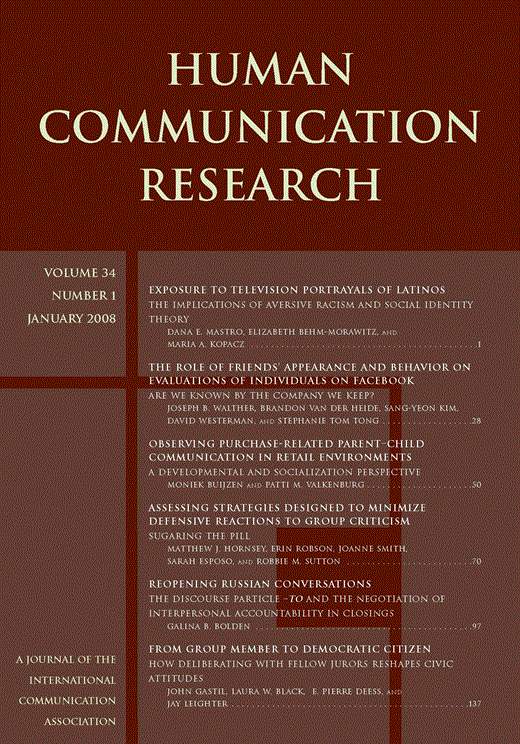-
Views
-
Cite
Cite
Anthony Mulac, Lisa B. Studley, John M. Wiemann, James J. Bradac, Male/Female Gaze in Same-Sex and Mixed-Sex Dyads: Gender-Linked Differences and Mutual Influence, Human Communication Research, Volume 13, Issue 3, March 1987, Pages 323–343, https://doi.org/10.1111/j.1468-2958.1987.tb00108.x
Close - Share Icon Share
Abstract
In this study, 108 university students (54 men and 54 women) were each videotaped in two 8-minute problem-solving dyadic interactions: (1) same-sex, and (2) mixed-sex. Trained observers coded the interactions for simultaneous, moment-to-moment gaze and talk behavior of both interactants. MANOVA results for three dyad types (male/male, female/female, and male/female) measured on 10 dyad gaze/talk variables showed that F/F dyads exhibited more mutual gaze/mutual talk and mutual gaze/mutual silence than either M/M or M/F dyads. F/F dyads exhibited less one gazes/same talks and mutual avert/one talks than either M/M or M/F dyads. No differences were found between M/M and M/F dyads on any variable. Analyses of individual change scores from same-sex to mixed-sex dyads indicated that the women in the M/F dyads converged to the male behavior in that dyad condition, whereas the men remained unchanged. The results are discussed in terms of speech accommodation theory.





